CNC vs Metal Additive Manufacturing: Everything You Need to Know
CNC machining and metal additive manufacturing are two of the most advanced manufacturing methods today, each with its strengths and challenges. Choosing between them can be tough, but understanding their differences will help you make an informed decision for your next project.
When deciding between CNC machining and metal additive manufacturing, it’s important to consider factors such as precision, material availability, production speed, and costs. CNC machining excels in high precision and large-scale production, while additive machining offers complex geometries and rapid prototyping capabilities.
Let’s dive into the specifics of how these two technologies work and their key differences.
What is CNC Machining?
CNC machining involves the use of computer-controlled machines to remove material from a workpiece to create the desired shape. The process includes cutting, milling, turning, and drilling to produce high-precision parts from a variety of materials. It is widely used in industries such as automotive, aerospace, and medical devices due to its ability to create parts with tight tolerances and consistent quality.
Note: If you want to know more about CNC machining, you can read the following article:
What are Some Examples of CNC Machined Parts?
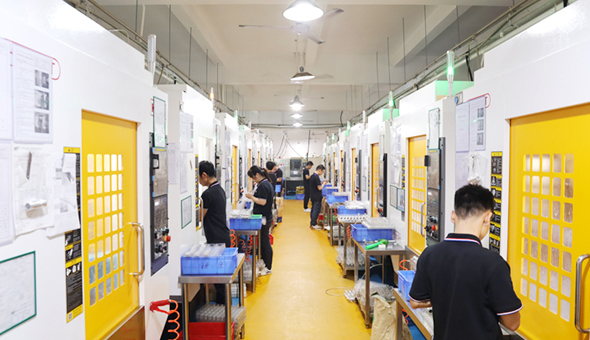
What is Additive Manufacturing?
Additive manufacturing often referred to as 3D printing, is a process of creating objects layer by layer using materials such as metals, plastics, and composites. In metal additive manufacturing, a laser or electron beam melts metal powder to fuse the layers together. This method is ideal for producing complex, lightweight parts with intricate designs that are not easily achievable with traditional subtractive methods.
How Do CNC and Metal Additive Manufacturing Work?
CNC machining works by using cutting tools to precisely remove material from a block or billet to create a desired shape. The process involves several techniques, including milling, turning, and drilling. These tools are guided by a computer program, which ensures accuracy and repeatability.
Metal additive manufacturing involves melting metal powder with a laser or electron beam and adding it layer by layer to build a part. This method is ideal for producing complex parts with intricate geometries, reducing the need for tooling or molds.
The Difference Between Additive Manufacturing and CNC Machining
CNC machining is a subtractive process that removes material from a solid block to create a part, while metal additive manufacturing is an additive process that builds up material layer by layer. Below are some differences between the two technologies:
1. Material Waste
CNC Machining: Since CNC machining is a subtractive process, material is cut away from a larger block, often resulting in significant material waste. The efficiency depends on how much excess material is removed to achieve the desired shape, which can be costly in terms of raw material consumption.
Metal Additive Manufacturing: Metal additive manufacturing (or 3D printing) uses only the material required for the part, minimizing waste. This is especially beneficial for expensive metals like titanium or specialized alloys, as the process deposits material layer by layer, and excess material is not discarded.
2. Complexity and Design Freedom
CNC Machining: CNC machining can create complex geometries but is generally more suited to parts with simpler shapes. Intricate designs, especially those with internal cavities or organic, complex forms, may require additional machining steps or assembly. Moreover, creating certain geometries may require multiple setups or the use of specialized tooling, making it more challenging for highly intricate designs.
Metal Additive Manufacturing: Metal additive manufacturing excels at creating geometrically complex and intricate shapes that would be difficult or impossible with CNC machining. For example, internal channels, lattices, or organic geometries, such as those found in aerospace components or medical implants, can be created without additional tooling or assembly. This process allows designers to push the limits of creativity, producing highly customized parts for specific applications.
3. Speed and Production Volume
CNC Machining: For large-scale, high-volume production, CNC machining is typically faster, as it is optimized for high-speed manufacturing of parts with simple geometries. However, the setup time for CNC machining can be lengthy, particularly when multiple tools or machine configurations are needed. Additionally, for large parts, machining time can increase.
Metal Additive Manufacturing: Metal additive manufacturing can be quicker for low-volume production and prototypes because it doesn’t require tooling or extensive setup. However, it may be slower for larger or simpler parts, as each layer must be meticulously deposited and fused. This means that while additive manufacturing is ideal for low-quantity, highly customized parts, it may not always be the best solution for mass production compared to CNC machining.
4. Materials
CNC Machining: One of the primary advantages of CNC machining is the wide variety of materials it can work with. It can handle virtually all metals, including hard metals like steel, titanium, and aluminum, as well as plastics, composites, and even some ceramics. This versatility makes CNC machining suitable for a broad range of industries, including aerospace, automotive, medical, and industrial manufacturing.
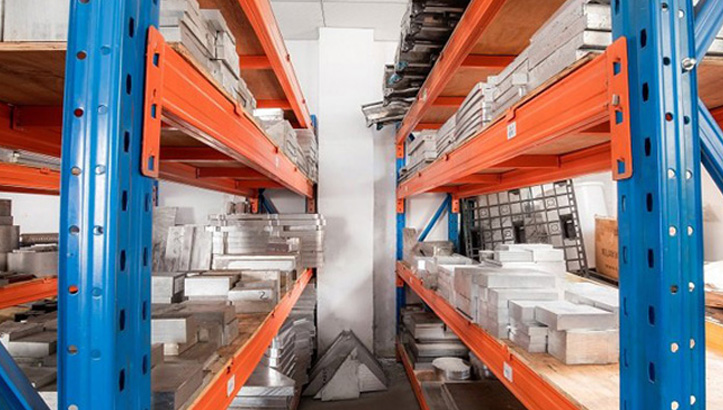
Metal Additive Manufacturing: While metal additive manufacturing is advancing, it is still limited to a smaller selection of materials. Metals commonly used include stainless steel, titanium, aluminum, and Inconel. However, new materials are continuously being researched and developed for use in additive manufacturing. Compared to CNC machining, the material range is narrower, which can be a limitation for specific applications that require custom or hard-to-machine materials.
5. Tolerance and Precision
CNC Machining: CNC machining is known for its high precision and can achieve tolerances as tight as 0.01 mm, making it ideal for industries that require exceptional accuracy, such as aerospace and medical. The process can consistently produce parts with high dimensional accuracy and surface finishes, particularly when used with advanced equipment like 4-axis and 5-axis machines.
Metal Additive Manufacturing: While metal additive manufacturing offers decent precision, it typically falls short of the tight tolerances achievable with CNC machining. Surface finishes may also require additional post-processing to smooth out the layers deposited during the printing process. However, improvements in technology and post-processing techniques are closing this gap.
6. Post-Processing
CNC Machining: Post-processing in CNC machining is generally minimal, as the machine typically produces parts that are ready to use or require only minor finishing, such as polishing or deburring. The precision of the machining process often eliminates the need for extensive secondary operations.
Metal Additive Manufacturing: Metal additive manufacturing often requires post-processing to achieve the desired surface finish and mechanical properties. For example, parts may need to be heat-treated to improve strength or undergo machining to remove support structures. This additional step can add time and cost to the overall manufacturing process.
7. Tooling and Setup
CNC Machining: CNC machining involves setting up machines with specialized tooling (cutters, drills, etc.) that are specific to the part geometry. For each new part, tooling may need to be changed or adjusted. The initial setup can be time-consuming, especially for complex parts, but once set up, CNC machining is efficient for high-volume production.
Metal Additive Manufacturing: Metal additive manufacturing requires very little tooling, as the process relies on a digital file to control the deposition of material. This makes it ideal for low-volume production or prototypes, as there’s minimal upfront investment in tools or tooling changes. However, for high-volume production, the lack of tooling efficiency can become a disadvantage.
8. Cost Efficiency
CNC Machining: The cost per part in CNC machining can vary depending on the complexity of the part and the materials used. For high-volume production, the cost per unit is generally lower, but the setup costs and tooling expenses can be significant for small batch runs or prototype parts.
Metal Additive Manufacturing: While metal additive manufacturing eliminates tooling costs and setup time, the cost per part can be higher for large or mass-produced components. The initial investment in additive manufacturing technology can also be steep, though it may offer savings in material usage and post-processing costs for low-volume, custom, or complex parts.
What are the Advantages and Disadvantages of Additive Manufacturing?
Additive manufacturing, often referred to as 3D printing, is an innovative method of creating parts by adding material layer by layer, as opposed to traditional subtractive methods like CNC machining. This process has been rapidly evolving, providing distinct advantages in specific use cases, particularly for parts that require intricate designs, low-volume production, or high customization. However, like any manufacturing method, additive manufacturing also comes with its own disadvantages. Let’s take a closer look at the pros and cons of this technique.
Advantages of Metal Additive Manufacturing
1. Complex Geometries
Metal additive manufacturing is highly effective for creating intricate geometries that would be impossible or prohibitively expensive to produce using traditional methods, like CNC machining. Examples include internal channels, complex lattice structures, and organic shapes that don’t require additional assembly or tooling. These capabilities are particularly useful in industries like aerospace and medical device manufacturing, where weight reduction and internal cooling are essential.
2. Customization
Additive manufacturing excels at producing customized parts, especially when low quantities are required. This is ideal for applications like medical implants, where parts need to be tailored to individual patient needs. In prototyping, rapid iteration of designs is possible, which enables faster testing and product validation compared to traditional manufacturing methods.
3. Material Efficiency
Metal additive manufacturing minimizes waste by using only the material needed for the part. Unlike CNC machining, which starts with a block of material and cuts away excess, additive manufacturing builds the part layer by layer, which results in material savings. This is particularly advantageous when working with expensive materials like titanium or high-strength alloys, as it ensures cost-effective production.
With additive manufacturing, prototyping is faster than traditional methods. Once a digital design is created, the part can be fabricated relatively quickly, reducing the lead time. This speed makes additive manufacturing especially beneficial for industries where time-to-market is critical, like automotive and consumer electronics. It also allows for quick iterations and modifications based on design feedback.
5. Reduced Tooling and Setup Time
One of the key advantages of metal additive manufacturing is that it requires minimal tooling compared to traditional methods like CNC machining. Since the process relies on 3D printing technology, there is no need for specialized molds, dies, or cutting tools. This significantly reduces setup time and costs, making it highly suitable for low-volume and custom parts.
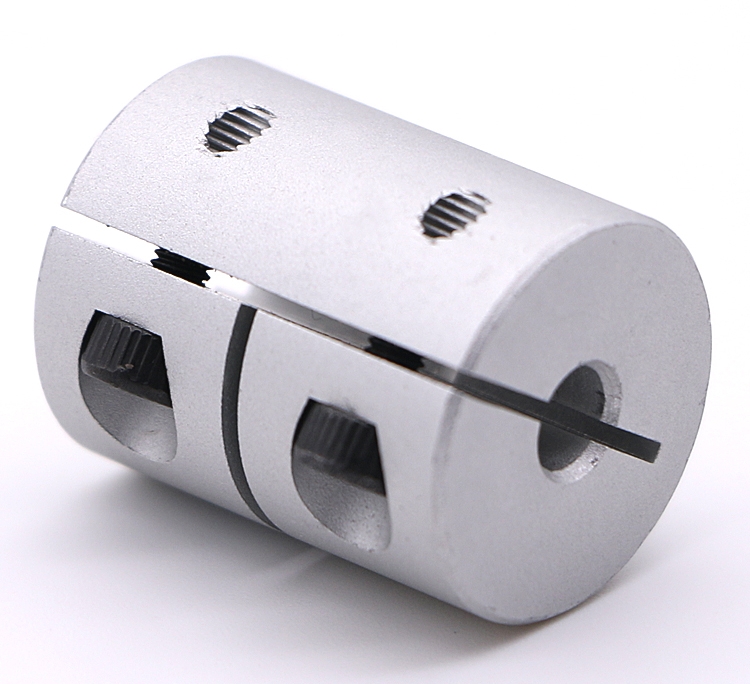
Disadvantages of Metal Additive Manufacturing
1. Material Restrictions
One of the main limitations of metal additive manufacturing is its restricted range of materials. While CNC machining can work with a wide variety of materials, including tough metals and composites, additive manufacturing is typically limited to a smaller selection of metals. The most commonly used metals include stainless steel, titanium, aluminum, and Inconel, with fewer options for plastics or composites. While research is expanding the range of printable materials, it is still not as diverse as what CNC machining can handle.
2. Speed for Large Parts
While additive manufacturing is efficient for small to medium-sized parts, it can be significantly slower for large parts compared to CNC machining. 3D printing large components involves adding many layers of material, which can take substantial time. In contrast, CNC machining is faster for bulk production of larger components, especially in high-volume production settings. This speed advantage is particularly evident when manufacturing large parts like engine components or structural elements.
3. Mechanical Properties and Strength
The mechanical properties of parts produced through metal additive manufacturing can sometimes be inferior to those made using traditional methods. This is because the layer-by-layer build process can introduce imperfections such as porosity or weaker bonding between layers, which might reduce the overall strength of the part. In certain high-performance applications (e.g., aerospace), parts produced via additive manufacturing might need additional post-processing steps, such as heat treatment, to meet the required strength specifications.
4. Cost for Mass Production
While additive manufacturing offers significant cost savings for low-volume, custom, and prototyping applications, it can be cost-prohibitive for large-scale production. The material deposition process for each part can be expensive, especially when large volumes are required. Additionally, the need for post-processing can add to the cost, making metal additive manufacturing less cost-effective for mass production compared to CNC machining, which benefits from economies of scale for high-volume production.
5. Limited Build Size
The build size of a metal additive manufacturing machine is limited by the machine’s maximum print volume. While there are large-format machines available, for particularly large parts, multiple prints and assembly might be required, which introduces additional complexity and cost. On the other hand, CNC machining can often handle larger components in a single operation, making it more efficient for large-scale parts.
What are the Advantages and Disadvantages of CNC Machining?
CNC machining is a widely used manufacturing process that involves removing material from a workpiece to create a specific shape or design. This subtractive process offers several advantages, particularly in terms of precision, material versatility, and scalability. However, like all manufacturing techniques, it has its disadvantages as well. Below are the key advantages and disadvantages of CNC machining:
Advantages of CNC Machining
1. High Precision and Accuracy
CNC machining is known for its exceptional precision. The automated process ensures that parts are produced with high accuracy, often with tolerances as tight as 0.01 mm. This makes CNC machining ideal for manufacturing parts that require strict dimensional control, such as aerospace components, medical devices, and automotive parts. The ability to achieve tight tolerances and repeatability makes it a top choice for industries demanding high standards of quality and consistency.
2. Versatility in Material Selection
One of the major advantages of CNC machining is its ability to work with a wide range of materials. It can handle metals such as steel, aluminum, titanium, copper, and stainless steel, as well as a variety of plastics like ABS, nylon, and delrin. The flexibility in material selection makes CNC machining suitable for industries ranging from automotive manufacturing to medical equipment, where different materials are required for different applications.
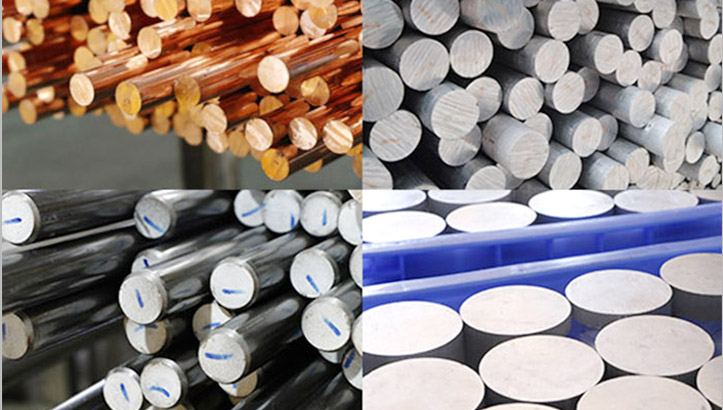
3. Scalability and High Production Speed
CNC machining is highly scalable, making it efficient for both low-volume and high-volume production runs. Once the initial setup is complete, the machine can run continuously, producing parts at a rapid pace. This is especially advantageous for mass production, where high throughput is essential. For industries with high demand, such as electronics or consumer goods, CNC machining offers the capability to manufacture large quantities quickly and consistently.
4. Complex Geometries
While additive manufacturing excels at complex geometries, CNC machining is still highly effective in producing complex parts. With multi-axis CNC machining centers, manufacturers can produce parts with intricate shapes, detailed features, and tight tolerances. Unlike traditional manual machining, CNC machining offers the ability to precisely cut, drill, mill, and carve complex geometries with ease. This capability is crucial in industries like medical and aerospace, where components often feature complex internal structures or surfaces.
Disadvantages of CNC Machining
1. Material Waste
Since CNC machining is a subtractive process, it involves removing material from a larger block or sheet. This leads to material waste, especially when the original material is expensive or difficult to source. For instance, when machining parts from high-end metals such as titanium or Inconel, the wasted material can add up, making CNC machining less material-efficient compared to additive manufacturing, which only uses the material necessary for the part.
2. High Initial Setup Costs
While CNC machining is efficient once set up, the initial setup costs can be high. These include the cost of purchasing and maintaining CNC machines, programming the machines, and setting up the necessary tools. For low-volume production, these upfront costs can make CNC machining less cost-effective than other methods, such as additive manufacturing, which does not require tooling or setup time for each part.
3. Limited Geometrical Complexity
Although CNC machining is capable of producing complex parts, there are still some geometries that are difficult or impossible to achieve using this method. For example, internal structures like lattices, organic shapes, or designs with complex internal cavities can be challenging to machine. In such cases, additive manufacturing would be more suitable for producing highly complex geometries.
4. Longer Lead Times for Custom Parts
For custom or one-off parts, CNC machining can sometimes have longer lead times compared to additive manufacturing. While CNC machines can produce high-quality parts in a relatively short time once the program is set, the process of designing and programming the machine for a new part can take longer. In contrast, additive manufacturing often requires less setup time, making it faster for creating prototype or custom parts.
Applications of CNC vs Metal Additive Manufacturing
CNC machining and metal additive manufacturing serve distinct purposes and are used in various industries for different types of parts. CNC machining is known for its precision and reliability, making it suitable for industries such as automotive, aerospace, and medical devices. It is particularly effective for manufacturing high-volume, high-precision components, including engine parts, surgical tools, and aerospace components. The versatility of CNC machining allows it to work with a wide range of materials, including metals and plastics, making it ideal for creating parts that require tight tolerances and robust performance.
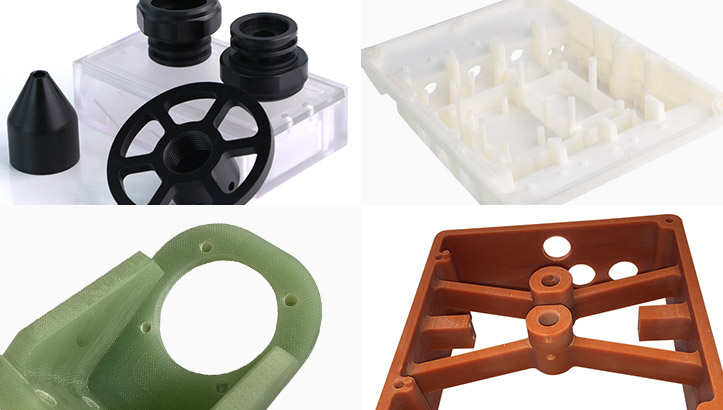
Metal additive manufacturing shines in industries requiring complex, lightweight, and customized parts. It is especially useful in fields such as aerospace, medical devices, and defense, where advanced geometries and low-volume production are necessary. The ability to produce intricate designs, like internal cooling channels or lattice structures, makes metal additive manufacturing ideal for producing optimized parts that are difficult or impossible to create with traditional methods. It is particularly valuable for rapid prototyping, tooling, and highly specialized components.
CNC vs Metal Additive Manufacturing: Which Method Is Right for Your Product?
Choosing between CNC machining and metal additive manufacturing depends on several factors, such as production volume, material requirements, complexity of the part, and budget considerations. Each method has its strengths, and selecting the appropriate one is crucial for achieving the desired outcome in manufacturing CNC processes.
Choose CNC machining metal if you need high-volume production, tight tolerances, and a variety of materials. It’s ideal for parts that require precision and smooth finishes, such as gears and engine components. Lavoro CNC techniques ensure high accuracy and consistency, making them suitable for mass production and industrial applications.
Choose metal additive manufacturing for complex designs, custom parts, or low-volume production. It’s perfect for lightweight structures, rapid prototyping, and reducing material waste, especially in industries like aerospace and medical devices. CNC and additive manufacturing can sometimes complement each other, with CNC refining 3D-printed parts for enhanced precision.
Both methods offer unique benefits, so the key is to evaluate your specific part requirements, volume, material, and design complexity. By understanding the strengths and limitations of each, you can make an informed decision that aligns with your project’s goals and ensures efficient CNC and manufacturing processes.
Start Your CNC Machining Project at VMT
At VMT, we specialize in CNC machining to deliver high-quality, customized parts for a variety of industries. Our state-of-the-art machinery, experienced engineers, and quick turnaround time ensure that we can meet your project requirements, whether it’s for prototyping or large-scale production. Contact us today to start your CNC machining project.
Frequently Asked Questions About CNC vs Metal Additive Manufacturing
What is the Best Additive Manufacturing Process?
The best additive manufacturing process depends on the application. Selective Laser Sintering (SLS) is ideal for durable, detailed parts, while Fused Deposition Modeling (FDM) is cost-effective for prototypes. Stereolithography (SLA) offers high precision for intricate designs, and Metal Additive Manufacturing excels in creating strong, functional metal parts. Choosing the process depends on material requirements, budget, and purpose.
What is Better Than CNC?
Additive manufacturing (3D printing) can be better than CNC for complex geometries, rapid prototyping, and material efficiency. However, CNC excels in precision, strength, and repeatability for metal parts. Hybrid systems, combining CNC and additive techniques, offer the best of both, enabling high precision and intricate designs.
Is Additive Manufacturing a Good Career?
Yes, additive manufacturing is a good career. It’s a growing field with opportunities in aerospace, healthcare, automotive, and consumer goods. Skills in 3D design, material science, and process optimization are in demand, making it a lucrative and innovative career choice for engineers and technologists.
What is The Most Reliable 3D Printer?
The most reliable 3D printers include brands like Ultimaker, Prusa, and Formlabs. For FDM, Prusa i3 MK4 is highly dependable. For SLA, Formlabs Form 3+ is a top choice. Industrial options like Stratasys and EOS deliver exceptional reliability for professional use. Reliability depends on the printer’s purpose, budget, and material compatibility.



